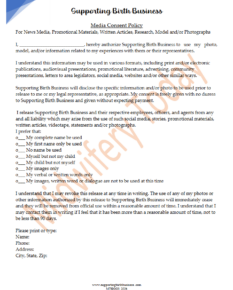
Issue 146
 Theme: Third Stage
Theme: Third Stage
Understanding the third stage of labor and knowing about strategies to resolve problems when something goes wrong is essential for midwives. This issue contains a variety of articles on this subject—including one by Vicki Penwell of Mercy In Action that discusses new strategies for dealing with hemorrhage, as well as several helpful articles on ways that birthworkers can better serve the women they work with.
Cover Photo by Harriette Hartigan
Columns
- From the Editor: Thoughts on Third Stage, by Jan Tritten, Gail Hart, and Jill Cohen
Jan and long-time friends and magazine contributors share their thoughts on various ways to deal with third stage, both in hospital and at home. - Marion’s Message: Midwifery and the Fetal Ejection Reflex? by Marion Toepke McLean
Marion discusses the fetal ejection reflex and an idea for a study comparing it to routine hospital care. - Tricks of the Trade
- Quote of the Quarter
- Media Reviews
- Midwifery and Childbirth News
Features
- Third Stage of Labor, by Mary L. Cooper
The author describes the third stage of labor, both positives and negatives, her experiences and its relationship to the fourth stage. - Birth Plan: Does the Path Still Fit the Objective? Do the Means Still Fulfill the Purpose? by Zuzana Laubmann
The author discusses birth plans, and how those that that include communication about the mother’s most important needs and safety, as well as a linkage of the skills and competencies of the mother and medical staff, may create a welcoming and trusting atmosphere. - The Little Midwife: 11 Key Observations about What it Takes to be a Midwife, by Kimi Joliba Honzaki and Anaiyah Al-Amin
Seven-year-old Anaiyah talk about her interest in midwifery starting at the age of four. She talks about what it takes to be a midwife and hopes to soon attend her first birth. - Birth of the First Mother, by Sister MorningStar
Through lovely story, Sister MorningStar shares her experiences with third stage and the First Mother—another name for placenta. She especially focuses on the need to let it take its time to be born. - A Travelling Midwife: Four Births, by Marianne Littlejohn
This article describes four cameos of four very different births attended by the author, a travelling midwife, set in differing cultures, geographies, unique lifestyles, religious beliefs, heartbreaking losses, and with different risks and benefits. - Emerging Strategies: Helping Mothers Survive Bleeding After Birth, by Vicki Penwell
Vicki Penwell, of Mercy In Action, has another fantastic article about providing services for birthing women in low-resource areas. The article discusses new strategies to stop and prevent hemorrhage in third or fourth stage, and the need for ongoing training so that midwives are better able to handle emergencies. - Midwifery and Matrescence*, by Adria Goodness
In this essay adapted from “The Birth of a Mother,” an article in the New York Times by Alexandra Sacks, MD, the author discusses the concept of matrescence, or becoming a mother. - Trauma-informed Care for Midwives, by Dinesha Lowden
Pregnant and birthing women, as well as midwives, can suffer trauma. In this article, the author describes what trauma-informed care looks like, how midwives can implement it, and suggests that trauma-informed care become standard in health care and social services. - My Journey as a Doula and Discovering Something More, by Jocelyn McFadden
The author writes about her experiences about becoming a doula and the pitfalls that she has encountered in the US birth world supporting women. - Wisdom of the Midwives
= Membership Article





















